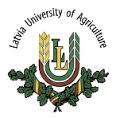Resource information
The current state of agricultural production space is the outcome of centuries of human activity, as conditioned by socio-economic, legal, and political factors. The characteristic features of the spatial layout of land, which has been shaped in this historical process in the rural areas of southern and south-eastern Poland, are farms divided into a large number of parcels, lack of access to parcels, irregular shapes of parcels, and their scattering in space. Rural areas in Poland are in need of profound structural changes related to agricultural production, the size of agricultural holdings, the distribution of farmland in agricultural holdings, as well as the demographic, spatial and institutional structure of those areas. Spatial and economic studies of rural areas often use the method of grouping individual villages by shared features into larger typological classes. Such a division is possible because rural areas are characterised by both diversity and similarity. Identification of areas with the largest possible similarity of features facilitates analysis and allows one to capture the spatial diversity of an area. The paper presents the degree of land fragmentation in 30 villages of the commune of Biłgoraj located in the Lublin Voivodeship in eastern Poland. The research area covered 15,635.60 ha of farmland divided administratively into 36,620 land parcels (cadastral plots). Fragmentation was measured using the synthetic index of fragmentation of land parcels. The index was used to identify villages, which were similar in terms of the number and area of parcels in the parcel-area groups adopted in this study. The types of villages identified in the study vary in terms of the degree of fragmentation, which may be used as one of the criteria for determining the order, in which the villages should be subjected to land consolidation and exchange.



